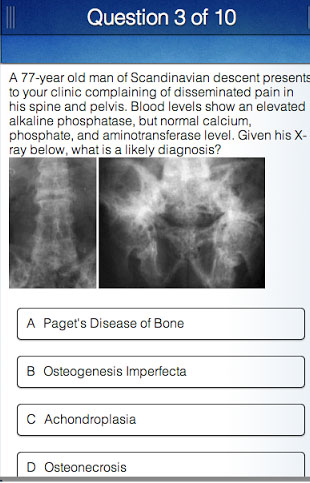
The Osmosis app uses quizzes and user-contributed content to crowd-source medical education.
If there is a time when students are under intense pressure to learn and remember vast amounts of information it’s hard to imagine a better test than medical school and it’s here that the app Osmosis was born.
Co-founders Ryan Haynes and Shiv Gaglani started to dream up the project just weeks into medical school.
“One of the things we have found frustrating is that there is a gap between what cognitive science tells us about how the brain learns and how we teach in the classroom,” Haynes said in a recent email exchange. “This gap existed during our undergraduate coursework but became especially apparent in med school when the volume of information we were expected to learn and retain multiplied exponentially (and with the current increases in biomedical knowledge can be expected to grow even larger for future generations of med students).”
The result was an alpha version of the app Osmosis.
Haynes described the final product as a mobile app that “increases the ability to learn (by providing convenient access to questions, images, and videos on the go) as well as provides a trigger similar to receiving a text message. The result is that a student does not have to schedule time to sit down with a book at the library and review material. Some of it can be absorbed passively outside of the traditional model of studying.”
Both Haynes and Gaglani stress this vision for learning is based on learning research and sought to help students learn collaboratively and not just from lectures and PowerPoints.
But for it to work, it would need other students to not simply use the app, but contribute to it.
“[W]e set up Osmosis as a side project so that our peers could crowd-source questions and other resources,” Gaglani said. “That was a highly successful experiment and we decided to take time off to continue developing the platform.”
That successful experiment started at Johns Hopkins University medical school. In it’s first year, and with only 240 students, contributors added 1,500 images and videos, wrote 5,000 practice questions and answered those questions more than 500,000 times.
Gaglani wrote it “showed a tremendous level of engagement among busy medical students.”
“We also began hearing from students at Northwestern and Columbia, among other institutions, who wanted to ‘learn by Osmosis,’” he added. “We applied and were accepted to a tech accelerator called DreamIt Health in Philadelphia in 2013 and decided to see how far we could take Osmosis.”
But the app is not a wiki-textbook with videos.
Central to the app and the project are a series of quiz questions written by fellow students and pushed out to users. The quizzes, which can be taken on one’s own or competitively against fellow students build off a core cognitive science development, according to Haynes and Gaglani.
“A recent development at the intersection of cognitive neuroscience and education is the ‘Testing Effect,’ which basically states that repeated formative testing improves learning and retention more than repeated studying. Thus a cornerstone of Osmosis is our continuous and adaptive quiz feature, to which we recently added a game called ‘Osmose with your Friends,’” Gaglani said.
“Echoing Shiv’s comments on the Testing Effect, the brain evolved to learn from constantly challenging its beliefs about its environment and then adjusting those beliefs accordingly in order to achieve a desired goal,” Haynes wrote. “This is known as the ‘actor-critic’ model in neuroscience (i.e., the brain takes an action and then critiques that action). Questions are an efficient first pass at critiquing one’s knowledge base (while reading over notes and watching long lectures tend to be less efficient because there isn’t an immediate critique). Of course, interacting with more experienced physicians and with actual patients provides a more realistic, higher-order critique, but for those experiences to be fruitful for the learner and mentor as well as safe for patients, a strong foundational knowledge base is required.”
Osmosis has attracted attention not only for its unique approach to the way students learn, but also to the soundness of it business strategy.
Last month, the startup took home dual first prizes from 2014 Milken-Penn GSE Education Business Plan Competition at the University of Pennsylvania. The two awards, from the Milken Family Foundation and the American Public University System Prize for Innovation in Online Education, represented a major endorsement of the project from one of the most prestigious and well-funded education business plan competitions.
The app – available on iOS, Android and a web-version – aims to expand beyond the 10,000 current users and both founders hope to disrupt the “cram-forget” style of learning.
“We are trying to reimagine the way people learn and retain information. For example, we believe any learner can also be a teacher, which is why we have focused on crowd-sourcing,” Gaglani said. “One of the reasons we chose the name Osmosis is because we believe knowledge can diffuse not only from teacher to student but also between students. We also believe in implementing tools, such as algorithms and devices, that can make learning more efficient.”
You can learn more about their project at the Osmosis blog or by watching Gaglani’s presentation at the 2014 TranformingEdu conference.
